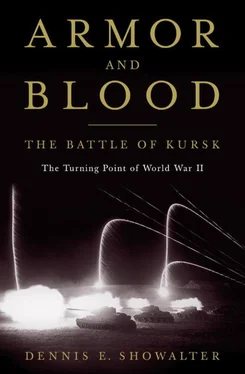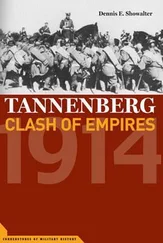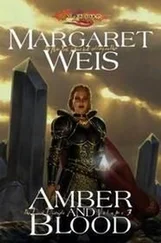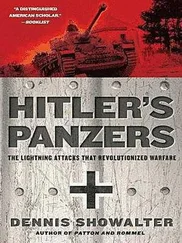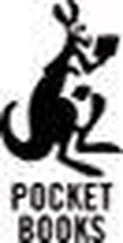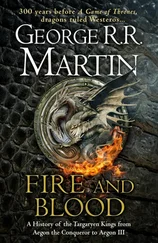70 No dictator can accept such a challengeMelvin, Manstein , pp. 394–395.
71 Close to throwing the Salerno landing into the seaAngus Konstam, Salerno 1943: The Allied Invasion of Italy (Barnsley, UK: Pen & Sword Military, 2007), is an economical overview.
72 Gersdorff … had gone so farHis version of the following events is in Rudolf-Christof Gersdorff, Soldat im Untergang (Frankfurt: Ullstein, 1977), pp. 134–136; cf. Hoffmann, German Resistance , p. 290.
73 “One-sided actionism”Isabel V. Hull, Absolute Destruction: Military Culture and the Practices of War in Imperial Germany (Ithaca, NY: Cornell University Press, 2005), p. 170.
74 Is an oath one-sided?Robert B. Kane, Disobedience and Conspiracy in the German Army, 1918–1945 (Jefferson, NC: McFarland & Co., 2002), analyzes and contextualizes this morally complex question.
75 They scorched the earthFor Manstein’s definition and description, see Manstein, Verlorene Siege , pp. 539–540. Broader analyses include Bernd Wegner, “Die Aporie des Krieges,” in Frieser et al., Ostfront , pp. 256–269; and from a unit perspective, Christoph Rass, “Menschenmaterial”: Deutsche Soldaten an der Ostfront: Innenansichten einer Infanteriedivision, 1939–1945 (Paderborn: Ferdinand Schöningh, 2003), pp. 365–385.
76 “Field of rubble”Cited in Stephen G. Fritz, Ostkrieg: Hitler’s War of Extermination in the East (Lexington: University Press of Kentucky, 2011), p. 372.
77 “Burning our bread”Quoted in David M. Glantz and Jonathan House, When Titans Clashed: How the Red Army Stopped Hitler (Lawrence: University Press of Kansas, 1995), p. 172.
78 By the time Army Group South reached the DnieperFrieser et al., Ostfront , pp. 360–367 and 301–308, discusses the situation of Army Groups South and Center.
1 First come statisticsZamulin, Demolishing the Myth , pp. 530–546; Frieser et al., Ostfront , pp. 150–159; Zetterling and Frankson, Kursk 1943 , pp. 111–131.
2 “Platoon technology”Dennis E. Showalter, “More than Nuts and Bolts: Technology and the German Army, 1870–1945,” Historian 65, no. 1 (2002): 139–142.
3 Signposts of the Red Army’s tactical progressFrieser et al., Ostfront , pp. 301–490, is the best analysis; Rolf Hinze, Crucible of Combat: Germany’s Defensive Battles in the Ukraine, 1943–1944 , trans. and ed. Frederick P. Steinhardt (Solihull, UK: Helion & Co., 2009), is the most detailed account in English.
4 Russian accounts stress a systemGlantz and House, When Titans Clashed , pp. 196–201; Karl-Heinz Frieser, “Der Zusammenbruch im Osten,” in Frieser et al., Ostfront , pp. 493ff. passim. Useful as well are Gerd Niepold, Battle for White Russia: The Destruction of Army Group Centre June 1944 , trans. Richard Simpkin (London: Brassey’s, 1987), and Walter S. Dunn Jr., Soviet Blitzkrieg: The Battle for White Russia, 1944 (Boulder, CO: Lynne Rienner Publishers, 2000).
5 Three taprootsCf. David M. Glantz, The Military Strategy of the Soviet Union: A History (London: Frank Cass Publishers, 1992).
6 Armored force in particular moved to an advanced stagePorter, Soviet Tank Units , is a useful introduction to a subject bidding fair to eclipse its German counterpart in specialized literature and on websites.
7 Altered the rifle units’ makeupDavid Glantz, “Soviet Use of ‘Substandard’ Manpower in the Red Army, 1941–1945,” in Scraping the Barrel: The Military Use of Substandard Manpower, 1860–1960 , ed. Sanders Marble (New York: Fordham University Press, 2012), pp. 151–178.
8 “They know absolutely nothing”Quoted in Max Hastings, Armageddon: The Battle for Germany, 1944–1945 (New York: Alfred A. Knopf, 2004), p. 124.
9 A culture of accommodationSee particularly Martin van Creveld, The Culture of War (New York: Presidio Press/Ballantine Books, 2008).
10 “Quiver like a mouse”Cited in Zamulin, Demolishing the Myth , p. 450.
11 Asked each man to give his ageLehmann, Leibstandarte , p. 230.
12 “A just and patriotic war”Reese, Why Stalin’s Soldiers Fought , pp. 176–200; Merridale, Ivan’s War , p. 282 passim.
13 Defending Western civilizationDavid K. Yelton, Hitler’s Volkssturm: The Nazi Militia and the Fall of Germany, 1944–1945 (Lawrence: University Press of Kansas, 2002), and Robert S. Rush, “A Different Perspective: Cohesion, Morale, and Operational Effectiveness in the German Army, Fall 1944,” Armed Forces & Society 25, no. 3 (1999): 477–508, combine to depict a reality much more nuanced and far less exalted. The matrix of Nazi Germany’s endgame of “war to the knife” is exhaustively presented in Ralf Blank et al., Germany and the Second World War , vol. 9/1, German Wartime Society, 1939–1945: Politicization, Disintegration, and the Struggle for Survival , trans. Derry Cook-Radmore (Oxford: Oxford University Press, 2008).
ALSO BY DENNIS E. SHOWALTER
Hitler’s Panzers: The Lightning Attacks That Revolutionized Warfare
Railroads and Rifles: Soldiers , Technology, and the Unification of Germany
Patton and Rommel: Men of War in the Twentieth Century
The Wars of German Unification
Tannenberg: Clash of Empires
The Wars of Frederick the Great
German Military History Since 1648: A Critical Bibliography
Little Man, What Now?: Der Stürmer in the Weimar Republic
Soldiers’ Lives Through History: The Early Modern World (with William J. Astore)
Hindenburg: Icon of German Militarism (with William J. Astore)
Voices from the Third Reich: An Oral History (with Johannes Steinhoff and Peter Pechel)
DENNIS E. SHOWALTER has taught history at Colorado College since 1969 and is joint editor of the journal War in History . He was president of the Society for Military History from 1997 to 2001. In addition, Showalter has taught at the United States Air Force Academy, the United States Military Academy, and the Marine Corps University. He has written extensively on the wars of Frederick the Great, the German Wars of Unification, World War I, and World War II. Tannenberg: Clash of Empires won the American Historical Association’s Paul Birdsall Prize for best new book of 1992.
Eastern Front: Beginning of March 1943
Kursk Sector: July 4
The Citadel: Soviet Defenses and the Kursk Salient
German Assault on the Northern Sector of the Kursk Salient
Manstein’s Sector: July 5–17
Alternative: Prokhorovka
Vatutin’s Projected Counterattack: July 12
Army Detachment Kempf at the Close of July 12
Prokhorovka: July 12
Operation Kutusov: July 13
To the Dnieper: July–September 1943
Advance praise for Armor and Blood
“The size and the brutality of the vast tank battle at Kursk appalls, this struggle that gives an especially dark meaning to that shopworn phrase ‘last full measure.’ Prepare yourself for a wild and feverish ride over the steppes of Russia. You can have no better guide than Dennis E. Showalter, who speaks with an authority equaled by few military historians.”
Читать дальше
